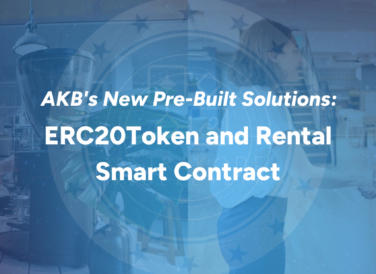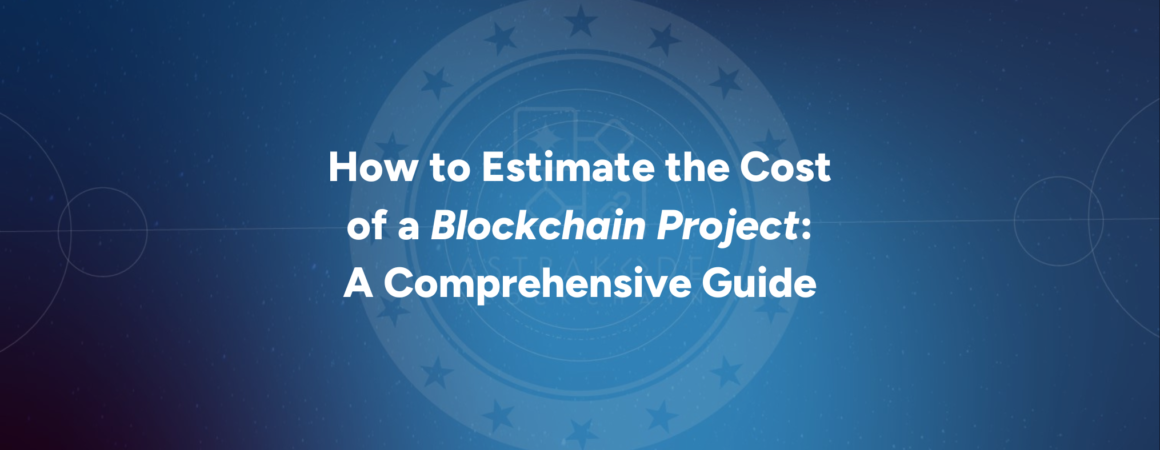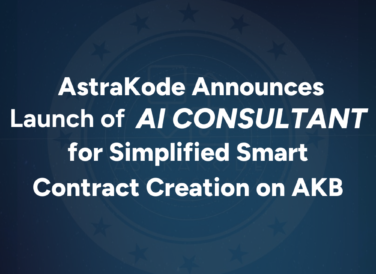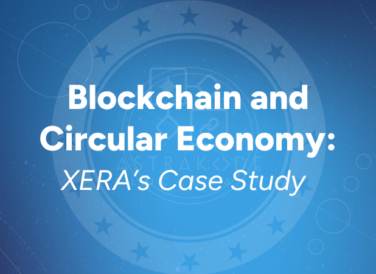
AKB’s New Pre-Built Solutions: ERC20Token and Rental Smart Contract
In today’s rapidly evolving digital landscape, establishing strong connections through efficiency, security, and transparency is…

Blockchain technology has evolved from being the backbone of cryptocurrencies like Bitcoin to a transformative force across various industries, including finance, supply chain, healthcare, and more. As more businesses explore blockchain solutions, understanding the costs associated with implementing a blockchain project becomes crucial. This guide will provide a detailed breakdown of blockchain project cost estimation, including key factors influencing costs, typical expenses, hidden costs, the estimation process, and actionable tips. Whether you’re a startup, an enterprise, or a consultant, this comprehensive guide will help you navigate the complexities of budgeting for a blockchain project.
Several factors affect the cost of developing a blockchain project. Understanding these variables will help you set realistic budget expectations and avoid cost overruns.
The complexity of the project is a major determinant of cost. A straightforward application with basic blockchain features like transaction recording will be less expensive than a complex solution with smart contracts, multi-signature wallets, and integration with external systems. The more features you add, the higher the cost.
Choosing between a public, private, or consortium blockchain significantly impacts your budget:
Where your development team is located and their level of expertise will influence costs. Hiring a team in North America or Western Europe tends to be more expensive than outsourcing to Eastern Europe, India, or Southeast Asia. Additionally, blockchain developers with specialized skills (e.g., Solidity for Ethereum) command higher rates.
Selecting a platform like Ethereum, Hyperledger, or Corda will influence costs based on their native programming languages, ease of integration, and transaction fees.
Security is paramount in blockchain. Incorporating robust security features like encryption, multi-signature transactions, and compliance with regulations (e.g., GDPR) will add to the cost but are necessary to safeguard data and transactions.
Integrating blockchain with existing IT infrastructure, such as databases, CRMs, or payment gateways, requires additional development time and costs.
Understanding where your budget goes helps in planning and justifying costs to stakeholders. Below is a detailed breakdown of typical costs associated with blockchain development.
Coming Soon: Smart Contract Auditing by AstraKode
AstraKode is launching its Smart Contract Auditing Service soon, designed to keep your code secure and free from vulnerabilities. Follow us on LinkedIn for more updates.
AML (Anti-Money Laundering): Laws and regulations designed to prevent illegal activities such as money laundering and terrorist financing by monitoring financial transactions and reporting suspicious activities.
KYC (Know Your Customer): A process that requires businesses to verify the identity of their clients, assess risk, and ensure compliance with legal requirements to prevent fraud and other illegal activities.
Post-deployment costs include bug fixes, performance improvements, and feature updates. Regular maintenance is crucial for security and operational efficiency.
Hidden costs can catch project teams off-guard, leading to budget overruns. Here are some expenses that are often overlooked:
Accurate cost estimation is crucial for project planning and financial forecasting. Here’s a step-by-step process to estimate blockchain project costs effectively.
Clearly define the project’s goals, target audience, and key features. A detailed scope helps in identifying the resources and time required.
Select a platform that aligns with your project requirements. Consider factors such as transaction fees, scalability, and community support when making your decision.
Break down the project into smaller tasks and estimate the time and cost for each. This includes frontend, backend, and smart contract development.
Determine the number of nodes, cloud hosting, data storage, and bandwidth required to support your application.
Allocate budget for rigorous testing and audits to ensure the reliability and security of your application. Compliance costs should also be factored in early.
Include a contingency budget of 10-20% of the total estimated cost to cover unexpected expenses, such as additional security measures or troubleshooting.
Understanding real-world scenarios can help contextualize the cost estimation process. Here are some more realistic examples of blockchain projects and their associated costs:
Several tools and platforms can help in estimating the cost of blockchain projects accurately:
Introducing Blockchain Cost Advisor by AstraKode
Need help estimating your blockchain project costs? Try Blockchain Cost Advisor, a free tool created by AstraKode. It guides you through the cost estimation process by asking a few basic questions about your project, then provides a detailed cost analysis. You can also ask for additional insights, suggestions, or information related to blockchain projects—it’s like having a personal consultant at your fingertips!
Accurate cost estimation is critical to the success of your blockchain project. Here are some actionable tips to help you stay on budget:
Estimating the cost of a blockchain project involves considering a variety of factors, from the scope and complexity of the project to hidden expenses like gas fees and compliance costs. By understanding these elements and following a structured estimation process, you can set realistic budgets and avoid unexpected financial pitfalls.
Ready to start your blockchain project? Use our Blockchain Cost Advisor for a quick cost analysis or contact us for a personalized consultation with our team of blockchain experts to help plan your project efficiently.

In today’s rapidly evolving digital landscape, establishing strong connections through efficiency, security, and transparency is…

Pescara, Italy — August 29, 2024 — AstraKode, the innovative no-code blockchain platform, is excited…

In today’s fast-paced business world, staying ahead means embracing innovation and sustainability. XERA, an Italian…